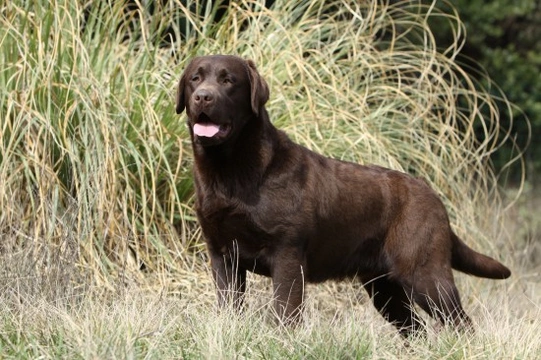
Breed standards in dogs - What do they encompass?
In order to establish and maintain a pedigree dog breed, it is necessary to have a breed standard in place in order to provide clarity and guidelines to breeders and dog owners as to precisely how dogs of the breed should look.
The breed standard for any particular dog consists of the description of the physical and personality traits that are considered to be the norm for the animal in question. How close or far any given animal of the breed conforms to the full detail of the breed standard dictates the perceived quality of the animal, and how likely they are to place in shows and be sought after for breeding.
Breed standards encompass a wide range of different elements, and the documents that make up the breed standard guidelines for any given dog breed are often long and complicated!
With many different elements in play, very few dogs within a breed will exactly match the full list of breed standards, and dogs that are considered to be the very best examples of their breeds, possessing the greatest number of desirable traits of the standard, are the types of dogs that win classes at Crufts and other prestigious dog shows.
Who decides what the breed standards are?
With young or relatively newly recognised pedigree dog breeds, generally the breed-specific organisation that is particularly concerned with promoting that particular breed will compose the first set of breed standards or the core guidelines of what is normal and desirable for the dog in question.
Once a breed is recognised for Kennel Club registration and showing or is in the process of receiving formal recognition, The Kennel Club will also have input into the breed standard, particularly in terms of ensuring that the normal or desirable traits of the dog are not detrimental to health.
The Kennel Club constantly monitor the evolution of breed standards and the change over time in the physical appearance and health of the average pedigree dog, to ensure that the breed standards are not designed to inadvertently cause health problems or difficulties with day to day life for the dogs in question.
They may also forbid the showing or placing in shows of dogs that possess traits that may be considered to be overly exaggerated, unnatural, or harmful to the wellbeing of the dog. Restricting the exaggeration of the head size in the Bulldog is one example of this. Showing guidelines for Kennel Club judges dictate specific traits or flaws that should ensure that dogs which possess them do not place in shows, and so the appeal to a breeder of continuing to selectively breed for said traits is reduced, and the health of the breed as a whole benefits.
What is dictated by breed standards?
First and foremost, breed standards should dictate that the animal in question is sound, healthy and not prone to any health problems as a result of the traits that they have been bred for. The other elements covered by breed standards include:
- A general description of the conformation, including height, build, bone structure and any features that should or should not be exaggerated
- The texture and condition of the coat
- The acceptable colours that the dog’s coat may possess
- The style of movement and the dog’s normal gait
- The size, type and position of the tail
- Size and detail of desirable leg and paw shape
- The muscularity and muscle distribution of the body
- The shape, size and carriage of the head and skull
- Thickness and length of the neck
- Detail of the mouth, teeth, bite and tongue
- Size, position and carriage of the ears
- Colour, prominence and size of the eyes
- The temperament and personality traits of the dog
- The main characteristics of the breed, including personality and appearance that make up the breed’s “signature” and make it instantly recognisable
Changing breed standards
Breed standards for many dog breeds have evolved and changed significantly over time, often simply as fashions change and different appearances become more or less popular. While for dogs of certain long established and popular breeds with thousands of puppies born annually (such as the Labrador Retriever) breed standards tend to remain fairly consistent from decade to decade, for some other breeds such as the Pug dog, breed standards can be considered to have changed a lot over the last century, and are still evolving now.
The Pug dog is an excellent example of how fashion and tastes have caused changes to be bred over into the traditional appearance of the dog over time. The Pug of 100 years ago looked significantly different to the Pug of today, with historical pugs having much longer legs and noses, rather than the short, stumpy Pugs of today with their pronouncedly brachycephalic faces.
However, the Pug dog breed is still right in the middle of a process of further ongoing changes, as it has been established that some of the breed standards that have proven desirable over the last hundred years (specifically for example, the exaggeratedly short muzzle) leads to eye and respiratory problems in a significant amount of Pug dogs.
The Kennel Club has now produced guidelines for breeders and show judges to ensure that dogs whose muzzle and eyes cause them problems or have requires surgical correction of a pronounced fault will not place in the show ring, reducing the incentive for dogs of this exaggerated type to be bred. Over time, this should ultimately lead to another change in appearance of the Pug dog, potentially back to a norm more similar to its historical appearance than its modern one.
This is just one example of the evolution of canine breed standards within one particular breed; the process is ongoing and constantly under review for every single pedigree dog breed that the UK Kennel Club recognises.



